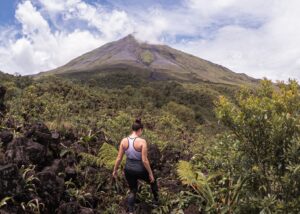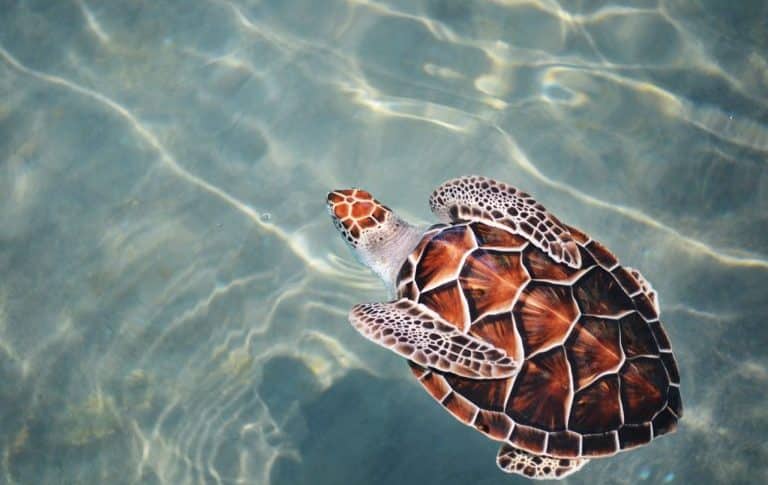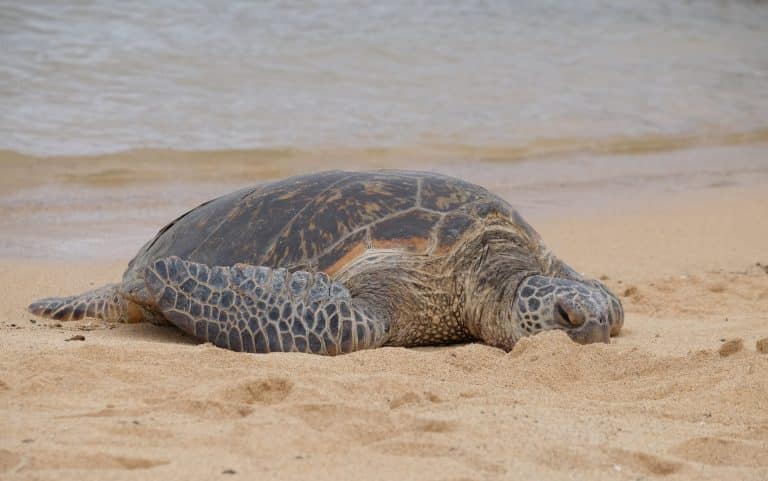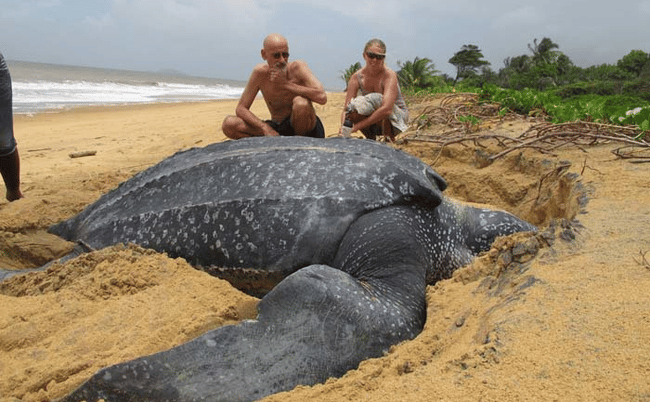
Subscribe
to our blog and newsletter
Costa Rica is primarily known for its unique nature and wildlife. However, some animals are not so easy to spot. The sea turtles that come to the beaches of Costa Rica to lay their eggs are high on the list of these animals here. Observing turtle egg-laying is accordingly also very popular with nature lovers.
It impresses everyone who watches it when it makes its way across the beach; it impresses everyone who cares about it. It usually grows to between 75 and 120 centimeters. But, like many of its congeners, the hawksbill turtle is threatened with extinction. It grows to about 75 to 90 centimeters and can be found all year round, both on the Pacific and Caribbean sides.
The olive ridley turtle is distinguished from other turtle species by its olive-green shell. It reaches 60 to 70 centimeters and is thus the smallest of all turtles. Nevertheless, it calls the waters of the Pacific Ocean it’s home. On the other hand, the loggerhead turtle is one of the larger of the bunch. With a shell size of 85 to 125 centimeters, it roams the seas and comes to lay its eggs on the beaches of the Caribbean coast.
Last but not least, the leatherback turtle also calls the coasts of Costa Rica home. This turtle is often compared to a relic of the dinosaur era because of its size of 190 to 220 centimeters and the leather-like structure of its shell. It impresses everyone who watches it when it makes its way across the beach.



A total of four of the species found in Costa Rica are represented here. The green sea turtle comes to the beaches of the Caribbean from July to September to lay eggs. After the breeding season, the hatching of newborn turtles can be observed from July to December. On the other hand, the loggerhead turtle comes from May to August and the leatherback turtle from February to July. The only one found year-round in the Caribbean is the hawksbill turtle.
The Guanacaste region, on the northern Pacific coast, is also considered a turtle hotspot. Especially the protected area Ostional is known for the so-called “Arribadas,” where hundreds of turtles come to the beach simultaneously to lay their eggs. The olive ridley turtle is mainly found here, but the green sea turtle can also be observed here frequently. However, the primary season for the latter is from December to March, and hatching can be observed particularly well from December to May.
Marine reptiles are also expected at Playa Grande. For example, the hawksbill turtle is here all year round to lay its eggs.
The Las Baulas National Park was named after the leatherback turtles; in Spanish, “Baula.” These giants come to this protected zone north of the Pacific coast from October to March.
The olive ridley turtle also lays its eggs in the Central and South Pacific, for example, at Playa Hermosa or on the Osa Peninsula, between July and February. The same goes for the green sea turtle, which can be found on beaches all year round with some luck. The particularly endangered hawksbill turtle has also chosen the Osa Peninsula as its nesting site. So if you are out and about in the Pacific, you have a good chance of spotting a turtle or two at the right time.
In Costa Rica, conservation is a priority. Observing turtles laying their eggs requires many precautions. In principle, tours are only offered by trained guides in the respective nature reserves and are carried out with great attention to detail. Exciting insider knowledge is pre-programmed. Appropriate precautions are also taken to protect these unique animals. For example, dark clothing is compulsory, and torches or camera flashes are prohibited. The sale of turtle eggs has also become illegal, as this puts the existence of the species at significant risk.
If you happen to come across a turtle by chance during an independent beach walk, stay away from it to avoid disturbing you while it is laying its eggs. Once she has started laying her eggs, you can approach. Try to stay behind her and keep your distance to not subject her to unnecessary stress. You should also avoid walking on existing nests, often recognizable by patterns in the sand, so as not to damage the eggs.
Never touch baby turtles with your bare hands. The babies need to walk across the sand to perceive the environmental cues so they can return to that beach to lay eggs later in their lives. Human smells and germs could prevent this.
If you can observe these unique animals live, enjoy getting to know these wonderful and endangered creatures. The experience will stay with you forever.

Interested? - If you visit Costa Rica, ask us to include a turtle tour.
Bella Aventura Team
to our blog and newsletter



Travel with friends Blog is the most updated digital travel magazine of the Costa Rican market, property of the travel agency Bella Aventura Costa Rica S.A., where we publish weekly the best recommendations, destinations, and experiences you cannot miss during your trip to Costa Rica. Be encouraged to travel with friends who will advise you to have the best experience.

Start your reservation by filling out the form below:

Inicie su reservación llenando el siguiente formulario:

Geben Sie Ihren Benutzernamen und Ihr Passwort ein, um auf Ihr persönliches Konto zuzugreifen, über das Sie Ihre Dokumente abrufen können.
Sie haben noch kein Konto? Jetzt anmelden
Thank you for submitting your request. One of our local experts will contact you shortly. Have a nice day.